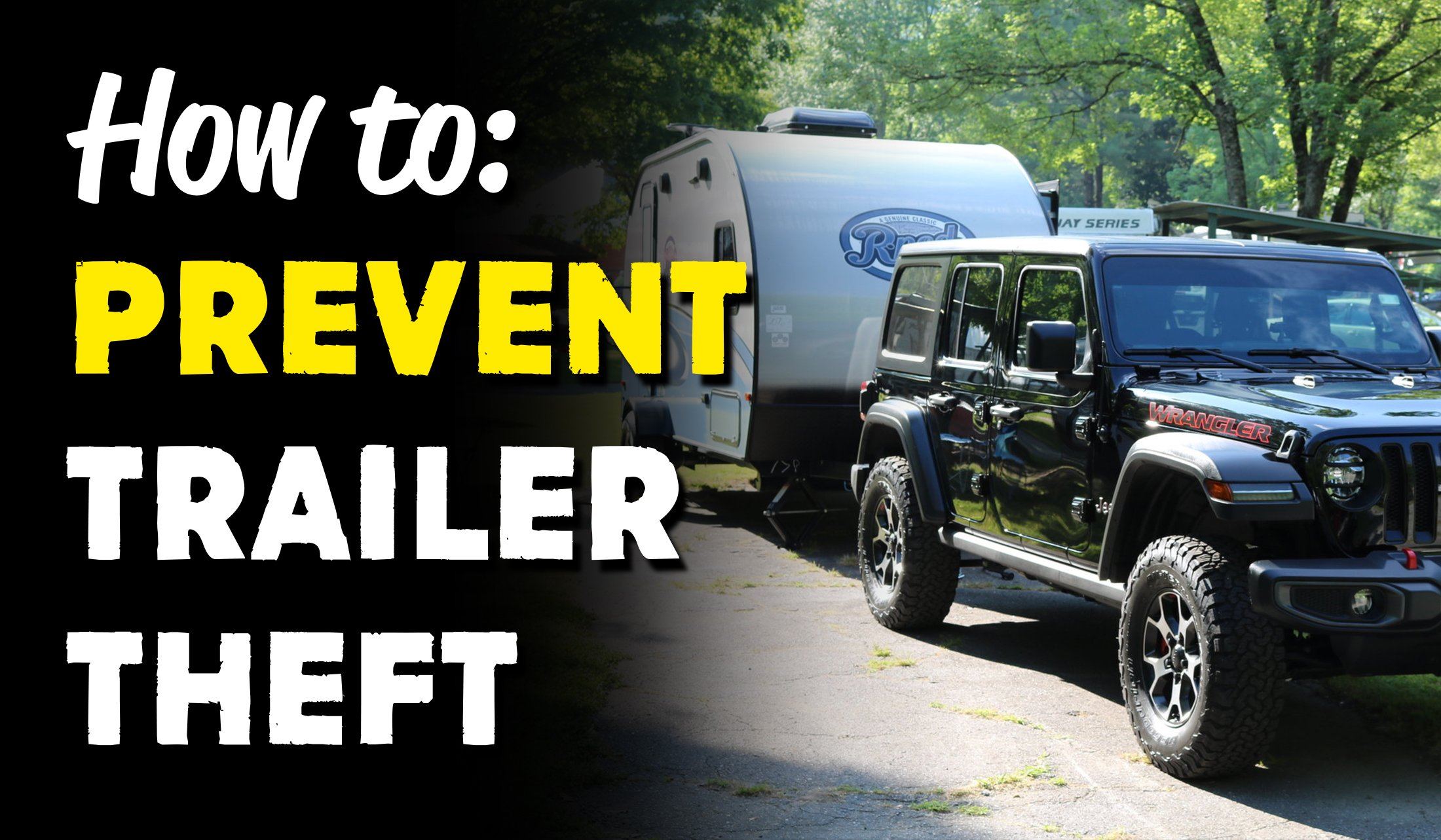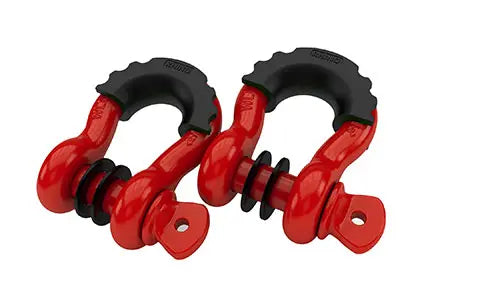
How to Lock a Trailer Hitch and Prevent Theft
Whether you've had a trailer for years or you've just gotten one recently, we can bet that you worry about it at times. After all, trailers get stolen every single day, and no one can be expected to watch theirs around the clock. How do you ensure that your trailer stays right where you want it? The answer is simple — just use a trailer hitch lock pin.
If you've gone through the steps of securely hitching your trailer to your vehicle, you're already well on the way to security. However, you can never be too careful, and that's why a hitch lock is a welcome solution many people take advantage of.
In this guide, we'll show you that protecting yourself against thieves is as easy as a trip down an open road with your trailer securely in tow. Keep reading to find out how to pick the best trailer hitch lock, how to lock a trailer hitch lock, and as a result, prevent theft!
Step One: Picking the Right Trailer Hitch Lock Pin

Some models of hitch lock pins are really basic and don't provide any real security. Those are the types of locks that later end up on YouTube in one of those "picking a lock in ten seconds" videos. To make things easier for you, we're here to provide a trustworthy solution.
RHINO USA's Locking Trailer Hitch Pin has just about everything you need in a trailer lock. This is a ⅝" locking receiver pin that can be used with Class III and IV hitches (2" x 2"). At Rhino USA, we’re well-known for making some of the best off-road accessories on the market, so this is a solution that is echoed by many satisfied trailer owners (not just us).
What makes this particular product stand out? It's made out of solid forged steel — you can use it to tow trucks, boats, bikes, and of course, trailers. You can trust it to keep your vehicles safe even under extreme conditions thanks to dust, gunk, and mud protection in the form of a weatherproof slide cap.
Most importantly, RHINO USA's Locking Trailer Hitch Pin has a complex lock that comes with a set of two keys. You can sleep soundly when this locking trailer hitch pin is what stands guard — and with a lifetime warranty, you'll never have to worry about it again.
Step Two: Double-Check Your Trailer

Before attempting to lock a trailer hitch, you should go over the steps you've already gone through in order to tow your trailer. This will ensure that everything is securely in its correct place.
- Check the coupler and make sure that it's tightly locked over the hitch ball.
- Inspect the safety chains. They should be crossed beneath your ball mount. This aids the general safety of your trailer and is not just an anti-theft measure.
- Check the wiring. It should not be running beneath the hitch ball or the coupler. Make sure everything is working properly.
Once you've done the above, move on to the next step.
Step Three: Install the Ball Hitch Receiver

Prior to installing the trailer hitch pin, you need to also install a ball hitch receiver. This is an easy task that shouldn't take more than a few minutes.
- Insert the ball hitch receiver into the trailer hitch.
- Slide the hitch pin through the hole on the side of the receiver.
- Insert the straight leg of the clip into the hitch pin and make sure it's nice and secure.
Step Four: Install the Trailer Hitch Lock Pin

With the ball hitch receiver in place, you're all set to lock your trailer and enjoy your well-deserved peace of mind. Let's break down the steps on how to lock a trailer hitch.
- Unlock & detach the lock from the body of the lock pin.
- Slide the slim part of the trailer hitch lock through the hole on the side of your ball hitch receiver.
- Once the pin sticks out on the other side, insert it into the lock securely.
- Push the weatherproof sliding cap aside and turn the key to lock your hitch pin.
Never Worry About Your Trailer Again!
Featured Product: Rhino USA Locking Trailer Hitch Pin
That's all there is to it! You've now taken a great step towards preventing the theft of your trailer. We hope that our guide has helped you during the process of installing your new locking hitch pin. If you've got questions, feel free to reach out to us at (800) 575-7310 — we will be happy to help you!
 FAQ's
FAQ's
Are trailer hitches universal?
There are many different types of trailer hitches, however, most vehicles with a trailer hitch come with the rear receiver hitch which has a common 2" receiver. Other types of trailer hitches include: front mount hitch, 5th wheel hitch, gooseneck hitch, bumper hitch, and more.
How to unlock trailer hitch lock?
Unlocking a trailer hitch lock is simple and involves the following steps:
-
Locate the Key or Combination: Determine whether your trailer hitch lock uses a key or a combination to unlock it. Rhino USA hitch pin locks come with a key, which is the most common way to lock and unlock your trailer hitch lock.
-
Insert the Key: If you have a key-based lock, insert the key into the lock's keyhole (Rhino USA's hitch lock has a keyhole cover which must be moved first). Turn the key in the direction specified in the lock's instructions to unlock it.
-
Turn or Rotate the Lock: After inserting the key, turn or rotate the lock mechanism as indicated in the lock's instructions. This action should disengage the locking mechanism and allow you to remove the lock.
-
Remove the Lock: Once the lock is disengaged, carefully remove it from the trailer hitch receiver. Make sure not to force it if it doesn't come off easily; sometimes, a gentle wiggle or slight pressure on the release button may be needed.
-
Store or Reattach the Lock: Store the unlocked lock in a secure place, or if you're using it for security purposes, reattach it to the trailer hitch receiver once you've finished using it.
Are locking hitch pins safe?
Yes, locking hitch pins, when used properly, can be a safe and effective way to secure your trailer hitch and other accessories. However, it is important to make the following considerations when determining if a locking hitch pin is safe:
-
Choose a Trusted Brand: Opt for reputable manufacturers like Rhino USA, known for their quality products and commitment to safety standards. Remember, Rhino USA offers a lifetime warranty on all of our products!
-
Proper Installation: Follow the manufacturer's instructions carefully when installing the locking hitch pin. Ensure it fits snugly and securely in the hitch receiver, leaving no room for movement.
-
Regular Maintenance: Periodically inspect the locking hitch pin for signs of wear, damage, or rust. Keeping it in good condition is essential for continued safety.
-
Secure Your Hitch Accessories: Locking hitch pins are especially useful for securing hitch-mounted accessories like bike racks, cargo carriers, and trailers. When used correctly, they provide an additional layer of protection against theft and accidents.
- Choosing a selection results in a full page refresh.








